Drawing a body girl base female is a practical skill that helps you create strong, well-proportioned foundations for any character artwork. Understanding solid base poses makes it easier for you to develop unique and expressive female figures, whether for sketching, digital drawing, or finished illustrations. Using accessible reference material and step-by-step methods, you can build a confident workflow that removes the guesswork from anatomy and posing.
There are many approaches you can explore, from simple stick figures to more detailed anatomy sketches, and a wide range of digital tools and resources are available to support your practice. Finding inspiration—like the examples you see on platforms such as Pinterest and art tutorial sites—can spark new ideas and encourage steady improvement in your artwork.
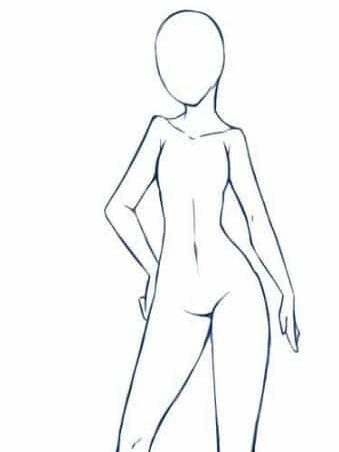
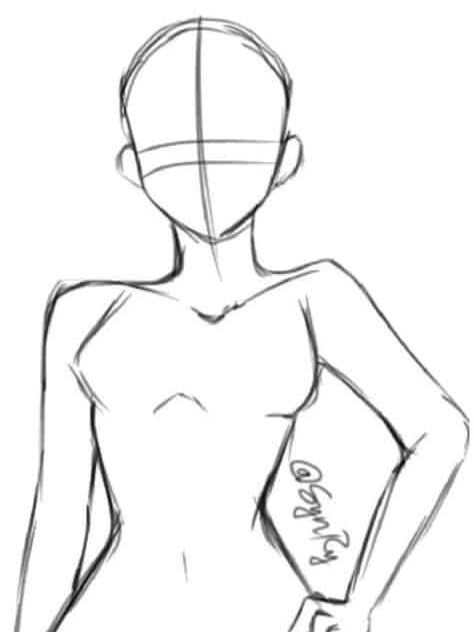
Key Takeaways
- Mastering a female drawing base boosts your figure drawing skills.
- Different styles and digital tools offer flexibility in your art process.
- Reference resources inspire creativity and steady learning.
Understanding the Female Drawing Base
When drawing the female body, accurate proportion and clear construction lines are essential to create balanced and believable figures. Paying close attention to body structure will help you build your own solid drawing base and improve both hand-drawn and vector sketches.
Essential Proportions for Girl Bodies
Start by establishing the head-to-body ratio. The average adult female figure stands between 6.5 to 7.5 heads tall. Girls or younger female figures might be drawn with a ratio closer to 5.5 to 6.5 heads.
Shoulders typically measure about two to two and a half head widths. The hips are usually the widest point and should be drawn a little wider than the shoulders for a natural female silhouette.
For placement of features:
- Elbows usually align with the waist.
- Wrists fall at the level of the hips.
- Hands reach mid-thigh.
Legs account for roughly half the body’s height. Keeping these proportional guides in mind helps you achieve consistent, realistic drawings whether working in traditional sketches or digital vectors.
Forms and Construction Lines
Use simple geometric shapes to lay the foundation. Start with circles or ovals for the head, chest, and hips. Connect these forms with lines for the spine and limbs. This approach helps maintain flow and keeps your figure balanced.
Construction lines guide the pose and gesture. A vertical center line splits the body and maintains symmetry. Horizontal guide lines show shoulder tilt and hip movements.
Break arms and legs into three segments: upper, lower, and hands/feet. This makes posing easier and ensures each limb bends naturally.
Building your vectors or drawings from basic forms makes it easier to adjust body shape, pose, and expression as you refine the sketch. Using construction lines early on gives you the flexibility to make corrections before adding details.
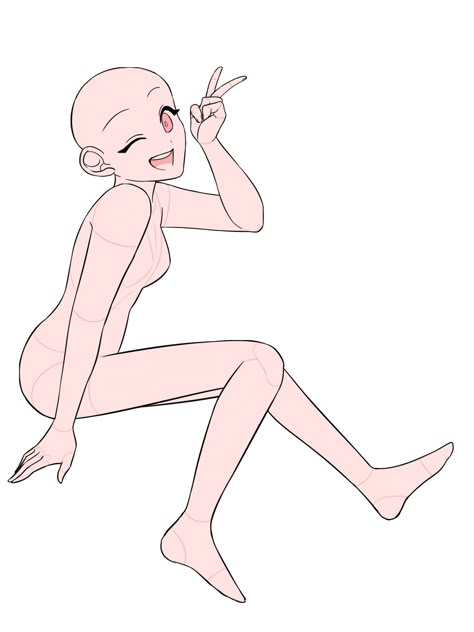
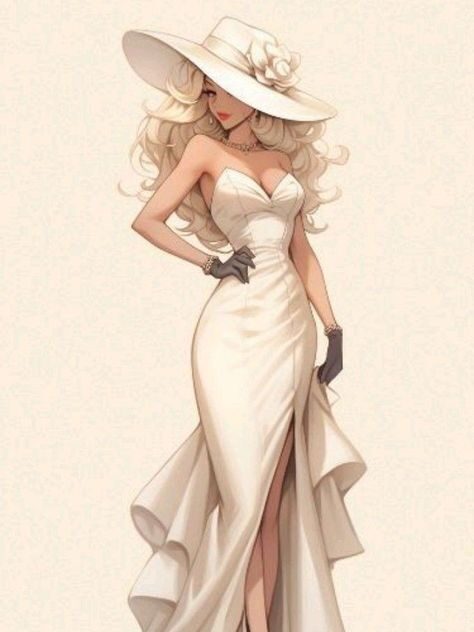

Step-by-Step Process for Drawing a Body Girl Base
Creating a body girl drawing base starts with sketching foundational shapes and then building up anatomical accuracy. The main steps are simple but need attention to detail and practice for the best results.
Sketching Basic Shapes
Begin by drawing a simple stick figure to indicate the pose. Light circles or ovals for the head, shoulders, torso, and hips help you keep proportions accurate from the start.
Block in the limbs using straight or gently curved lines. Connect the main body sections with lines to outline the spine and legs. Keep your pencil strokes light so you can easily adjust any shapes as you refine the sketch.
Many step-by-step videos and beginner tutorials use this approach because it lets you focus on the structure. You can mark basic landmarks, like shoulder width and hip placement, before moving to details. This method builds confidence and helps keep forms natural.
Refining Anatomy and Silhouettes
Once the basic structure looks right, start adding volume. Use gentle curves to flesh out arms, legs, and the torso. Pay attention to where joints bend, and try to keep muscle groups and proportions consistent.
Refine the silhouette by tracing clean, clear outlines over your sketch. Adjust the waist, thighs, and shoulders for a more feminine appearance—usually a narrower waist and wider hips. Add subtle lines for collarbones, knees, and elbows to show anatomy but avoid cluttering with unnecessary details.
Reference anatomy charts, body type references, and tutorial videos for accuracy. Don’t rush—making small adjustments helps achieve a natural-looking pose. Working in short, focused passes makes it easier to correct mistakes and build a believable female base.
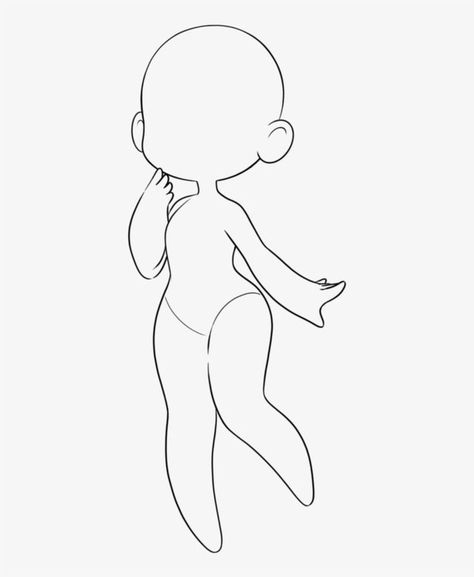
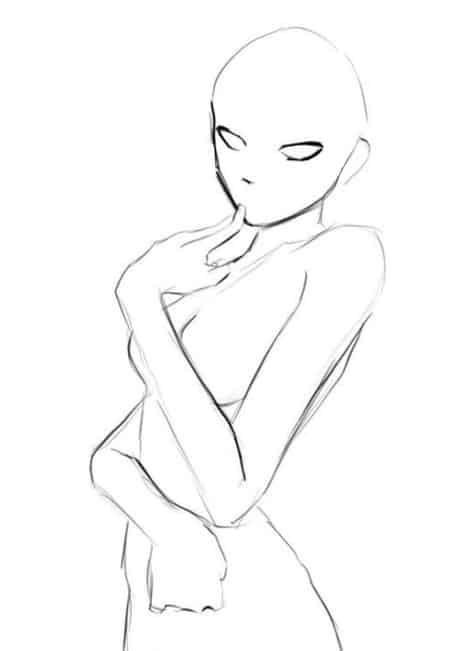
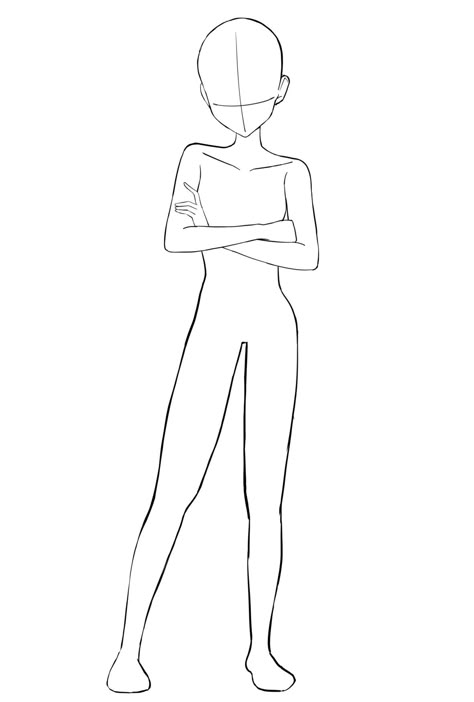
Popular Styles and Techniques
When drawing a female body base, your choice of style dramatically shapes how the final figure appears. Artists often focus on realism, stylization, or a blend, with many drawing inspiration from anime and cartoons.
Realistic vs. Stylized Bases
Realistic bases show accurate body proportions and muscle structure. You study anatomy and reference photos to capture details such as joint placement and natural curves. This approach helps you understand real-life variations in body shapes and posture.
Stylized bases simplify or exaggerate some features for visual effect. For example, you might make heads larger or limbs longer to express emotion or character. Stylized art often breaks from perfect anatomy to focus on shape, flow, and personality.
| Style | Key Features | Purpose |
|---|---|---|
| Realistic | True proportions, details | Practice anatomy, realism |
| Stylized | Exaggerated shapes, minimal | Express mood, design characters |
Experimenting with both styles gives you flexibility. You may start with realistic sketches and then adjust them to create unique characters.
Anime and Cartoon Influences
Anime and cartoon styles are highly popular for drawing female bases. These approaches use defined visual shortcuts: large eyes, small noses, and simplified bodies. Proportions are often different from real anatomy—torsos can be shorter, and limbs are often elongated or simplified.
You might see common body templates like “chibi,” which features a very large head and compact body. Clothing and hair are often drawn in bold, dynamic shapes that follow the character’s motion.
Lists of common features in anime/cartoon bases:
- Oversized, expressive faces
- Minimal anatomical detail
- Distinct silhouette shapes
Understanding these influences helps you adapt your base drawing to fit different genres or personal preferences, while still maintaining clear, recognizable body construction.

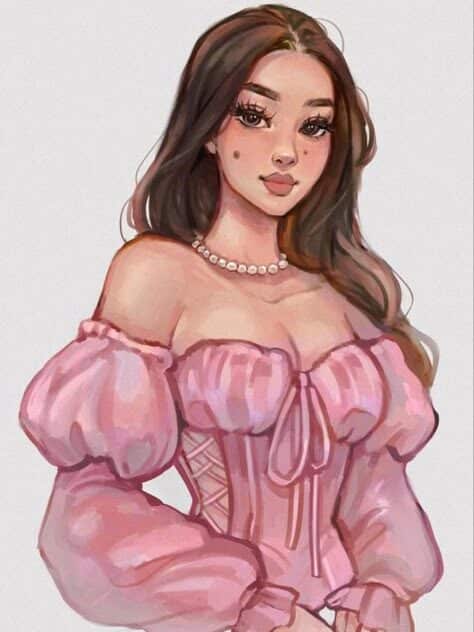
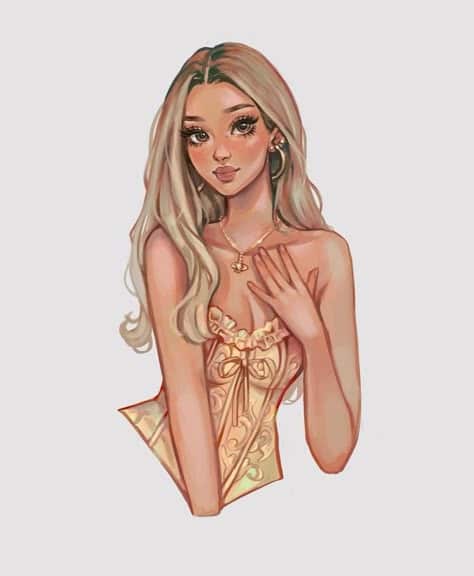
Working with Digital Tools and Vectors
Digital illustration adds speed and flexibility to drawing a female body base. Using vectors can give you cleaner lines, faster editing, and greater control over scale.
Advantages of Vector-Based Drawing
Vectors use mathematical paths instead of pixels, which means your lines stay crisp at any zoom level. This is especially helpful for drawing body bases because you can easily adjust proportions or reposition limbs without losing quality.
Editing vector shapes is non-destructive. You can move anchor points, tweak curves, and even recolor parts of your base quickly. For projects like character sheets, you save time by reusing and tweaking templates to suit new poses or body types.
Here’s a quick list of perks:
- Scalability: No loss of detail at any size
- Efficiency: Fast edits with reusable elements
- Clean lines: Smooth curves for outlines and forms
- Layer control: Separate parts (head, torso, limbs) on different layers
Whether you’re creating poses for comics or custom avatars, vectors give you control and flexibility.
Recommended Software for Female Bases
Choosing the right software makes a big difference when drawing vector-based female anatomy. Adobe Illustrator is a top choice for many because of its powerful pen tool, multiple export options, and extensive tutorials.
CorelDRAW offers a user-friendly interface and strong vector editing tools. For a free alternative, Inkscape is widely used and supports most essential vector functions. Digital illustrators often like Clip Studio Paint as well; it’s not fully vector-based, but its vector layer support helps with crisp inking and base construction.
Here’s a table for a quick comparison:
| Software | Key Feature | Cost |
|---|---|---|
| Adobe Illustrator | Advanced vector tools | Paid |
| Inkscape | Free and open source | Free |
| CorelDRAW | User-friendly, versatile | Paid |
| Clip Studio Paint | Hybrid raster/vector support | Paid (trial available) |
Pick based on your workflow and budget. Each offers advantages for constructing, refining, and reusing your female body drawing bases.


Inspiration and Resources for Female Body Drawing Bases
Finding reliable inspiration and resources can make a noticeable difference in your female body drawing progress. Specific tools and proven approaches help you build accuracy, understand proportions, and gain creative ideas.
Reference Photos and Pose Libraries
Using high-quality reference photos is one of the most efficient ways to understand body shape, structure, and movement. Sites like Pinterest feature curated boards such as “Female Body Bases,” which contain a variety of poses and body types as visual guides. You can save and organize references for quick access during practice.
Pose libraries provide sorted collections of photographs and sketches showing figures from multiple angles. Many artists rely on these for anatomy, foreshortening, and gesture studies. Websites sometimes break these down by activity or theme, making targeted study easier.
Some popular resources to look for include:
- DeviantArt Stock Photo Accounts
- Croquis Cafe
- Line-of-action.com
- Posemaniacs
- Pinterest art boards
Comparing multiple references helps you see how different artists interpret forms and highlight unique body nuances.
Video Tutorials and Artist Communities
Video tutorials on platforms like YouTube and TikTok offer step-by-step demonstrations of female body drawing techniques. Instructors explain how to create basic shapes, achieve correct proportions, and refine details. These videos are helpful if you learn best by watching processes unfold in real time.
Search terms like “female body base drawing for beginners” will reveal lessons ranging from quick sketches to full figure renderings. Certain creators also break down specialized topics, such as drawing diverse body types or challenging foreshortened views.
Participating in artist communities on Reddit or Discord connects you with others practicing similar skills. Here, you can post your work, get specific feedback, and access curated resources. Friendly discussions help you troubleshoot common problems, find new references, and stay motivated as you improve.
- 259shares
- Facebook0
- Pinterest259
- Twitter0


